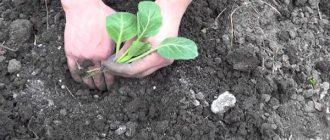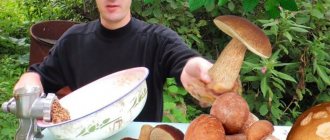According to many gardeners, peonies are not inferior to roses in beauty and popularity. These huge lush flowers can become a decoration for any special event. Domestic and foreign farmers periodically make attempts to plant them in a greenhouse, but practice shows that it is not necessary to spend money on the construction of such an expensive structure: with the right approach, growing peonies in open ground, even on your own summer cottage, can bring a businessman more than impressive income.
What varieties of peonies should I grow?
There are about 5,000 species of peonies in the world. Their classification is so complex that only specialists understand it. A novice entrepreneur can assume that any of these plants belongs to one of three groups:
- Tree-like. They are shrubs up to two meters high, covered with buds during the flowering period. They are not pruned for the winter, so growing and caring for a tree peony requires a warm shelter;
- Herbaceous. Their stems remain green, but reach a meter in height. Every autumn, gardeners cut them at the root to protect the plant from frost. In spring, the bush grows new shoots, which are soon covered with flowers;
- ITO hybrids. It is the result of crossing tree and herbaceous species. To avoid growing peonies in a greenhouse, breeders combined the frost resistance of the former and the productivity of the latter in one plant.
Most of the 500 varieties of tree peonies were created in China. These plants, like real trees, shed their leaves in the fall, growing more and more every year. Tree peonies are divided into three categories:
1. European. They are distinguished by large, heavy leaves and large double flowers of various shades, from white to cherry;
2. Japanese. Their inflorescences are also double, but are of medium size. The varieties tolerate frost well, which allows them to be grown everywhere;
3. Hybrid. They are subshrubs with medium-sized yellow semi-double flowers. 3–4 buds are formed on each stem;
4. Herbaceous peonies are very diverse. These are what they mean when talking about popular garden plant varieties. By growing roots over the years, the bush can live in one place for up to fifty years. Peonies are distinguished:
- Evaders. They have thick straight stems 50–100 cm high, each of which bears one large pink flower;
- Medicinal. They grow up to 40–70 cm. They are distinguished by massive red flowers with double petals;
- Narrow-leaved. They look like dense shrubs, covered with elongated narrow leaves of bright green color and simple cherry-colored flowers;
- Mlokosevich peonies. Low, dense shrubs with simple lemon or light yellow buds and orange stamens;
- Lactofloral. They have strong stems up to 90 cm high with pointed leaves. Flowers reach 20 cm in diameter.
It is logical to assume that in this varietal diversity, flowers can differ significantly from each other. They are not even similar in size: there are both small buds with a diameter of 3–5 cm and huge inflorescences of 20–25 cm. Peonies are found:
- Simple. They are characterized by flowers with wide petals of 8–15 pieces, arranged in one or two rows. The core of the bud is orange;
- Semi-double. Their lush flowers have several rows of petals of different sizes. In the center there are ordinary and modified stamens;
- Japanese. They are distinguished by original, petal-like stamens, which form a lush core of a contrasting shade in the center of the flower;
- Anemone-like. They have no more than a dozen large wide petals. Contrasting stamens, like narrow, sharp leaves, form a lush center;
- Terry. The flowers have wide petals in five to six rows. In the center are leaf-shaped toothed stamens, forming a lush shape.
When growing peonies at home, and especially for commercial purposes, varieties are selected so as to obtain fresh cut buds for the maximum period of time. This may be due to different flowering times:
Varieties of peonies for growing
| Variety | Bush, cm | Flower, cm | Color | Type |
| Early (until June 5) | ||||
| Henry Bockstoce | 85–95 | 20–22 | Dark red | terry |
| Paula Fay | 70–80 | 16–20 | dark pink | semidouble |
| Coral Sunset | 70–80 | 18–20 | coral | semidouble |
| Red Grace | 90–100 | 16–18 | red | terry |
| Arietina Northern Glory | 70–80 | 18–20 | lilac | terry |
| Pearl placer | 80–85 | 14–16 | pink | terry |
| Lustrous | 70–80 | 18–20 | red | semidouble |
| Snow Mountain | 75–85 | 15–17 | white | terry |
| America | 65–75 | 20–21 | scarlet | simple |
| Mid-early (June 5–15) | ||||
| Duchesse de Nemours | 90–100 | 18–19 | white | terry |
| Mirage | 100–110 | 12–13 | crimson | terry |
| Miss America | 70–80 | 23–25 | white | terry |
| Bridal Shower | 85–100 | 18–20 | white | terry |
| Average (June 15–20) | ||||
| In memory of Gagarin | 85–90 | 16–18 | white-pink | terry |
| Top Brass | 80–90 | 19–20 | lemon white | terry |
| Spring | 85–90 | 16–17 | white-pink | terry |
| Festiva Maxima | 100–120 | 18–20 | white-pink | terry |
| Mid-late (June 20–30) | ||||
| Sable | 80–90 | 16–17 | black-red | simple |
| Kurile Islands | 85–100 | 17–18 | yellow-pink | terry |
| Auguste Dessert | 75–80 | 14–15 | pink | terry |
| Sarah Bernhardt | 85–95 | 18–20 | pink | terry |
| Late (after June 30) | ||||
| Arkady Gaidar | 85–95 | 16–17 | bright raspberry | terry |
| Enchantress | 95–100 | 17–18 | cream | terry |
| George W. Peyton | 85–90 | 18–19 | white-cream | terry |
| Gladys Taylor | 75–80 | 17–18 | bright raspberry | terry |
| ITO hybrids (June 10–25) | ||||
| Bartzella | 85–90 | 24–25 | lemon red | terry |
| Garden Treasure | 75–90 | 20–22 | yellow | semidouble |
| Hillary | 75–80 | 16–18 | coral | semidouble |
| Prairie Charm | 75–85 | 12–16 | red-yellow | semidouble |
| Cora Louise | 80–90 | 18–22 | lilac-white | semidouble |
| Tree-like (May 20—June 10) | ||||
| Hua er qiao | 150–180 | 20–25 | red and white | terry |
| Primevere | 170–200 | 24–25 | white-yellow | semidouble |
| Black Pirate | 170–200 | 20–22 | Dark red | terry |
The ideal greenhouse for flowers + everything about growing flowers in a greenhouse
Even the naked eye can see how profitable growing flowers in a greenhouse is as a business: lively grandmothers and avid gardeners hit the real jackpot during the holidays! But far from the fabulous amount they charge lovers for one rose, even half of it was invested in growing the latter. That is why even those who cannot stand flowers by nature, having once tried to grow them for sale, already engage in this business with great pleasure - it is profitable, no matter how.
The most important thing in this matter is to correctly select and equip a greenhouse for flowers. Experienced gardeners warmly assure that if you approach this wisely, you can grow flowers in greenhouses with 300% income!
What flowers are best to grow for sale?
And finally, experienced flower growers advise growing in their greenhouses not just one variety of flowers, for example, only tulips, but several at once. After all, a well, beautifully arranged bouquet is always more expensive than the total of the same flowers separately. Therefore, the best option is up to ten varieties of flowers under one roof.
Daffodils - impossible not to notice
Daffodils always delight the eyes of passers-by with their yellow-orange bells, and therefore, thanks to their brightness, they are always recognizable. Daffodils need to be planted in the fall, even before the first frost, which occurs later in the greenhouse. It is precisely this type of flower that can be successfully cultivated after the main harvest of vegetables has been harvested.
The most important thing is to pre-cool the daffodil bulbs, otherwise they simply will not bloom. After which they can be planted - to a depth of 10-15 cm, at an air temperature in the greenhouse of up to 9°C. To protect from frost, planted bulbs should be covered with straw, 3-4 kg per square meter. And the bulbs need to be stored at a temperature of 4-9°C in small boxes, in any ventilated, dry, cool room - about 9 weeks.
Another way to nurture these beautiful flowers is to grow them in greenhouses in plastic pots and store them at a temperature of 3-9°C. Such pots and boxes can be stacked on top of each other to save space in the greenhouse.
Tulips - delicate buds
To grow bright, healthy tulips, you need to select only large and healthy bulbs for planting - they will germinate well, and their flowers will also be large. To plant them, the soil in the greenhouse should be dug up in advance, adding wood ash and a little bit of some mineral fertilizers. And in August, tulip bulbs need to be dug out from open ground, dried and hidden in the basement.
In December, you will need to warm up the greenhouse to +2°C and plant tulip bulbs in it. It will be necessary to maintain this temperature for two months, starting to gradually increase it only at the end of January: first raising it to +8°C, then to +15°C and to 22°C. As soon as green shoots appear, you need to turn on artificial lighting - at least 6 hours every day. And by March 8, fresh tulips with buds will be waiting to be cut in the greenhouse.
Among tulips, in terms of quality and yield, varieties such as “Electra”, “Nassao”, “Orange”, “Alberio” and “Telescope” are considered.
Peonies - bright shades
Peonies are unpretentious plants for which you only need to fertilize the soil with humus and a minimum of mineral fertilizers. In order to prepare the soil in a greenhouse for growing peonies, it is necessary to add 8 kg of rotted manure per square meter + 50 g of superphosphate + 50 g of nitrophoska + 600 g of wood ash. Everything needs to be dug up, and you can plant peonies, after which you can water and mulch with humus in a layer of 1.5-2 cm.
All care for peonies - weeding, loosening the soil and watering. And when the plants begin to grow, they will need 2 feedings per month with diluted infusion of chicken manure and mineral fertilizers.
Beautiful peonies will delight the eye with color and quantity if you purchase the following varieties: “Duchess de Nemours”, “Avalanche”, “Rubra Plena”, “Nemesi” and “Keloueys Gloris”. Peonies in general are unpretentious in themselves, and they sell very well.
Roses - the price will say a lot
Roses are the most expensive and beautiful flowers. They can be bred in a greenhouse using layering, or by grafting. In the first case, you need to select the strongest side shoots and deflect them in different directions, burying them in grooves 8 cm deep. It wouldn't hurt to hold these shoots down with pegs to the ground. The main thing is that the ends of the shoots are always on the surface - this way you can get 10 such layerings from each strong bush. In the second case, roses are grafted onto rosehips using “sleeping” eyes - from late July to mid-September. Roses are good because they can be grown for many years in the same place.
Asters - as easy as shelling pears
Asters for growing in a greenhouse can be purchased as annuals or perennials. Their flowers are large, double. The best varieties are “Alpine Astra” and “European Astra”.
Asters of the first grade are large flower baskets of various colors, with a 20 cm stem and rather sparse leaves. European aster is a highly branched bush with many flower baskets - it will bloom all spring and summer.
Nasturtium – for true connoisseurs
Nasturtium is a beautiful spreading bush. Its most popular types are large nasturtium and hybrid nasturtium. The first one has a liana-like stem 40 cm long. It blooms for quite a long time and has double flowers in orange, pink, light yellow and white shades. It needs to be sown according to a 30x40 or 30x30 cm pattern. It is absolutely undemanding in terms of lighting, but requires periodic feeding with organic and mineral fertilizers.
But hybrid nasturtium has long stems and large round leaves. It blooms only with yellow and red flowers.
Daisies are capricious flowers
Cute and delicate daisies are always in great demand among buyers. You can also propagate in your greenhouse by cuttings, seeds and dividing the bush. So, seeds need to be sown according to a 10x10 cm pattern.
It is important to remember that daisies love loose, well-drained soil and are very demanding of moisture. You need to feed it with regular mineral fertilizers.
Violets are a real challenge
Violets have always been and will always be in price. It is better to plant them by March 8th using cuttings, which can be purchased at a specialized store. The only thing is that violets do not like crowded conditions, and therefore it is better to grow them only for assortment. Of the varieties, the most successful today are: “Adonise”, “Cardinale” and “Doctor Faust”.
According to their structure and color of flowers, they can be divided into 5 main groups:
- Group 1. This includes violets with one-color and two-color flowers, in the center of each of the petals there is one eye. The best varieties of this group are “Albilura”, “Bikonefield” and “Doctor Faust”.
- Group 2. This includes violets, which have three eyes on their petals. The best varieties are “Adonis” and “Cardinal”.
- Group 3. Varieties with variegated corolla color are usually classified into a separate group.
- Group 4. This group of violets has mixed flower colors: mottled, marbled, striped and variegated.
- Group 5. And finally, the fifth group includes violets with wavy and corrugated petals.
That's how different and wonderful violets are. And they can be propagated both by cuttings and seeds. Violet loves well-fertilized, moist soils, but it should not be sown too thickly - it is better according to the 15x20 cm pattern.
If cuttings are used, they need to be prepared in advance, selecting terminal shoots with 2-3 nodes. Such cuttings will take root in 4 weeks, and the growing flowers will need to be fed with saltpeter and superphosphate, adding 30 per m2 of each. And that’s all, all that remains is to water frequently and loosen the soil.
Dahlias - flowers that love shade
Dahlias look very beautiful in a motley bouquet, and therefore it is advisable to find a place for them in the greenhouse. These are double flowers, very different in shape and color. They, like violets, are also divided into groups: decorative, chrysanthemum-shaped and spherical. The former have large double inflorescences of various shades. The best varieties: “For Peace”, “Lakhta” and “Marianna”.
Chrysanthemum-shaped dahlias also have large inflorescences, but they consist of individual long tube-shaped flowers that are strongly curved. The most successful varieties of this group are “White Lady” and “Evening”. But the flowers of the spherical dahlia are collected in especially large inflorescences in the form of a ball. Their best varieties are “Porcelain” and “Red Ball”.
Dahlias propagate by seeds, root tubers and cuttings. They love well-fertilized soil: 4 kg of manure should be applied per planting site, and mineral fertilizers should be 8 g of ammonium sulfate, 40 g of superphosphate and 8 g of ash. Capricious dahlias should be planted in a checkerboard pattern, after which the soil should be mulched with either humus or peat.
And finally, dahlias are plants that prefer short daylight hours, and therefore it is better to shorten their exposure to the sun a little. To do this, you can make small caps from lightproof paper and put them on the plants every day at 15:00, removing them only the next morning.
What should a good greenhouse for flowers look like?
So far, all experts have agreed that the best greenhouse for flowers is a greenhouse in the attic of your own house or cottage. This is from the point of view of private floriculture. But such a building can be successfully replaced by an ordinary greenhouse for vegetables, if it is properly prepared.
So, if a greenhouse or greenhouse has only one transparent wall, then it should look only to the south in areas above 60 degrees north latitude, and to the east in more southern latitudes. Blinds will help regulate the temperature in the greenhouse, which will be simply irreplaceable on hot days.
In a greenhouse, on just one square meter you can grow up to 25 hyacinths, daffodils, violets, tulips and up to 100 daisies. All that is needed for this is to waterproof the floor, install heating and automatic watering. Even by March 8, up to 2 thousand tulips can be grown in this way, which will cover any costs.
It's all about the popular technology of growing flowers in greenhouses and greenhouses, which is called “forcing.” So, fresh black soil is poured into a special ceramic flower trough (which is better to disinfect with steam in advance). Peat and a little sand are added to it. Flower bulbs need to be planted every 20 cm from each other, if you do everything according to technology, but in reality, 5-7 cm is usually enough. After planting, you need to add more black soil, squeeze it a little - so that only the top of the bulb is visible. After which, for thirty days, the greenhouse will need to be immersed in darkness and coolness, no more than 5°C. Moreover, all this time the soil with the bulbs should be moist.
After these days, the blinds can be opened slightly to allow the temperature to rise to 10°C. This is where the formation of the flower begins, and with the appearance of the first buds, the greenhouse should already be bathed in sunlight. The flowers themselves in the greenhouse must be watered generously and carefully monitored so that they do not overheat: the ideal temperature for them is 15-20°C.
This is how tulips, daffodils and crocuses are grown. Moreover, for many of these plants, the color of the polycarbonate for the greenhouse is not so important, and therefore you can experiment with the design and make such a greenhouse a true decoration of the dacha! According to experts, the flower business in Russia has good prospects, and Dutch flowers are already being quite successfully squeezed out of local markets. Try it and you will be surprised how much you will enjoy this activity!
- Author: Konstantin
vasha-teplitsa.ru
Methods of growing peonies
For beginners, it is better to use ready-made seedlings as planting material. But they are quite expensive, and therefore, as the entrepreneur gains experience, he should try other methods of plant propagation. Peonies are grown:
- Seeds. To grow peonies from seeds, planting material is collected in early October and hardened in a cold place for two months. Then they are soaked in a solution of a growth stimulator and planted in cups with compost, and in the spring they are transferred to open ground. You can expect the first flowers only in the fifth year;
- By cuttings. At the end of June, a shoot with one or two buds is cut from the bush and kept in a root formation stimulator for a couple of hours. After this, fill a suitable container with the substrate and continue growing peonies in the pot. After two months, when the shoot has grown a root system, it can be transplanted to the garden bed;
- Dividing the bush. To grow a peony from the root, the bush is dug out of the ground and several sprouts with an underground part are separated from it. Of course, at least two or three buds should remain on these shoots. The cut-off part is transplanted into a new hole and fertilized with manure. A young bush can bloom already in the third year;
- By layering. This method is less risky, since the shoot is fed from the main bush before growing the root system. In May, it is bent to the ground, slightly cut at the point of contact, secured with pegs and watered with a root formation stimulator. Within a couple of months, the cuttings will have their own roots.
The use of garden peonies in landscape design
Low-growing herbaceous peonies can be grown solo on an alpine hill. Medium-sized and tall bushes with aquilegia, delphiniums, poppies, foxgloves, and low dicentra look good.
Various herbs will highlight the beauty of peonies: feather grass, thyme. In the spring, spring primroses will appear at the base of their roots.
You can plant peonies next to clematis, choosing them by color.
An original solution would be to create a composition of just peonies of different colors and flowering periods.
Peony is a garden decoration. By choosing the right varieties and planting the seedlings correctly, you can admire the flower garden for many years.
How to find a site for peonies?
The branched root system of plants requires a large volume of soil, and therefore growing peonies at home in a pot is possible only for decorative purposes. To get some acceptable income from the sale of cut flowers, you need to allocate at least 5–10 acres of land for bushes. When choosing a site, you should consider that:
- Plants must be constantly illuminated. If some part of the site is in the shade for a long time, the bushes here will not even begin to bloom;
- Peonies need an influx of fresh air, but without drafts. In a field fenced with a solid fence or forest belt, outbreaks of diseases are possible;
- Flowers do not tolerate stagnation of water even for a short time. In case of possible flooding, arrange drainage or plant bushes on ridges;
- The best soils for growing peonies at home are considered to be fairly loose and aerated loams or sandy loams;
- The soil should not be acidic. At pH 6.5–7.5 and higher, deoxidation is carried out by mixing earth with lime or chalk;
- Peat and peat soils are not recommended to be used even for mulching. They significantly increase acidity and harm plants.
Disease Control
Not often, but still, peonies succumb to viral diseases. And in most cases, they are caused by poor-quality planting material. Therefore, it is best to buy plants for propagation in nurseries that professionally grow peonies. However, even if seedlings of good quality are purchased, this does not guarantee that the plants will not become victims of aphids and other insects that can carry viruses. Therefore, since effective treatments have not yet been invented, the bushes need to be provided with timely protection, especially from the most common fungal diseases:
- Gray rot (develops in cool wet weather in clayey areas);
- Rust (develops very rapidly and in damp weather can infect everything around);
- Brown spot (the disease can develop in early summer and can be recognized by large brown and maroon spots that gradually increase and give the impression of burnt leaves);
- Root rot (fungi attack the root system, stems and as a result the plant dies. The cause, quite often, can be increased humidity and acidity of the soil).
If it so happens that the plant is sick, then the best way out is to burn it. And to prevent trouble from happening, when planting peonies, you should stay away from raspberry bushes, strawberries, potatoes, and cucumbers.
Another disease prevention measure is limited agricultural technology. That is, do not use fresh manure, mulch with old compost, and do not overdo it with nitrogen fertilizers.
How to choose peony seedlings?
As noted above, growing peonies from seeds at home is not practical for a beginner: not every gardener will wait five whole years for the first profit. To get cut flowers at least for the third year, it is better to purchase seedlings, and not at a nearby market, but at a nursery or a large gardening center. There are several rules for choosing high-quality planting material:
- For planting, it is preferable to use one-year or two-year-old seedlings. As a rule, they adapt well to new conditions;
- The central roots should be light in color and at least 20–25 cm long. As a last resort, rhizomes 15–20 cm long are allowed if there are many of them;
- A productive seedling usually has 2–3 large buds. It is impossible to purchase short roots without buds at all;
- The plant should be moderately moist. Too wet or dry bark indicates potential problems;
- Spherical growths or knotty thickenings on stems or roots are extremely dangerous. They indicate that the bush is infected with an infection or nematodes.
In order for planting and growing peonies to proceed without complications, it is necessary to carry out preliminary preventive treatment of seedlings:
- The roots of the seedlings are freed from packaging, and rotten or dried shoots are cut off. Then the bushes are washed with warm water and dried;
- A few days before planting, the plants are dipped with their roots in a solution of potassium permanganate or a special fungicide for dressing;
- After this, the bushes are immersed for a day in a warm solution of any root formation stimulator - Kornevin, Kornerost, Zircon or Heteroauxin;
- Fresh cuts on stems and roots are sprinkled with activated carbon or treated with wood ash for protection;
- The seedlings are placed in a cool, dark place for several days. During this time, a protective cork layer forms on them.
Peonies after flowering
In different regions, flowering ends from May to June. During this period, it is important to remove damaged stems and wilted flowers from the bushes. 2 weeks after the end of flowering, to support the plant, you will need to fertilize the flowers with a solution of mineral potassium-phosphorus fertilizers (40 g of ammophosphate for each bush).
In August, the flowers will need to increase the watering rate - during this period the flowers begin to lay replacement buds.
How to plant peonies?
Although plants have two periods of growing root mass, most experts still recommend starting to grow peonies in the garden in the fall, moving the seedlings into open ground 30–40 days before frost.
Depending on the region, this could be either the end of August or the beginning of October. If there are no other options, it is possible to plant peonies in the spring, before warming causes massive growth of shoots. Practice shows that it is better to do this immediately after the snow melts, as soon as the soil warms up to 2–4°C, that is, at the end of March or beginning of April. Regardless of the planting time and time of year, the procedure is carried out as follows:
1. To plant plants, they dig holes 60–70 cm deep and 60–70 cm in diameter within a few days. Thus, peonies will be able to grow a powerful root system;
2. Between the pits, maintain an interval of 80–100 cm for herbaceous varieties and 120–150 cm for tree varieties. Technological passages must be left on the site;
3. The bottom of the pits is covered with a drainage layer of 10–15 cm, consisting of broken brick, gravel, expanded clay or coarse sand;
4. Two-thirds of the fertile soil extracted from the pits is mixed with organic and mineral fertilizers in the following volume for each bush:
- 12–15 kg of last year’s manure or compost;
- 300 g superphosphate, 150 g potassium sulfate, 400 g bone meal;
- 30 g copper sulfate for root growth.
5. The roots of the seedlings are straightened and laid out at the bottom. The shoots are leveled so that the growth point is 4–6 cm below ground level;
6. The holes are carefully filled with fertilized soil, lightly compacting it with your hands. Do not compact the soil to avoid damaging the roots;
7. The upper part is covered with the remaining clean earth. On heavy chernozems or loams it is worth diluting it with turf or river sand;
8. Make shallow holes around the bushes and pour 15–20 liters of water there. When the soil settles, add the missing part;
9. The next day, the area around the bushes is covered with a mulch layer 10–12 cm thick, consisting of sawdust, straw or bark.
Landing dates
Many gardeners ask the question: “When is it better to plant peonies, in spring or autumn?”
In order for the plant to take root and delight you with its flowering next year, it is recommended to plant rhizomes in the fall.
The best period is the end of August - mid-September, before the onset of frost. During this period, the plant will be able to grow young roots and become stronger.
In the spring they are planted after the snow has melted, when the flower bud has not yet had time to wake up and begin to grow. There is one negative aspect of spring planting - the bush will bloom only next year.
How to care for peonies?
Growing peonies in open ground and caring for them definitely should not be called a set of easy and unburdensome operations. If an entrepreneur wants to get a good harvest, he must go to the plot every day, starting from March and ending in November. What do we have to do:
- In early spring, after the snow melts, remove the mulch layer and, for disinfection, water each plant with a solution of potassium permanganate 2–3 g per bucket of water;
- The soil around the bushes and between the rows is cultivated to a depth of 5–7 cm to remove weeds and destroy the soil crust. Then lay a new layer of mulch;
- Each plant is checked for the depth of its growing point. If it is too close to the surface, the bushes spud;
- In the first year, to develop the root system, all buds that have formed are cut off from the peony. In the second year, leave one and check compliance with the variety;
- Starting from the third year, the side buds are pinched when they reach the diameter of a pea. This helps produce larger flowers;
- Spreading bushes of herbaceous varieties are tied up so that during strong winds or rain the heavy buds do not break the stems;
- Circular grooves are made around the bushes for watering. The volume of water for irrigation is 25–30 liters every 8–10 days;
During the summer growing season, plants are fed three times. Agricultural technology for growing peony includes applying the following doses of fertilizers to the bush:
- After the snow melts - 15 g of nitrogen and 20 g of potassium around the stems;
- At the beginning of budding - 10 g of nitrogen, 15 g of phosphorus and 15 g of potassium under the roots;
- Two weeks after flowering - 15 g of phosphorus and 15 g of potassium at the root.
In autumn, when the movement of sap from the above-ground part of the plant to the roots stops, the bushes are pruned for wintering:
- Herbaceous varieties with yellowed foliage - at the root in early September, and with green vegetative mass - in early October;
- Tree varieties - at the end of October, forming a crown and at the same time removing damaged or diseased branches;
- ITO hybrids - at the root at the end of October, leaving 10–12 cm of stems.
For the winter, plants are covered with an insulating layer of fallen leaves, humus, straw or sawdust 15–20 cm thick.
During the cold period, the bushes are regularly checked for buds exposed from the ground. If necessary, shoots are additionally sprinkled.
Autumn pruning and preparation for winter
The perennial shrub is undemanding in care, but despite this, it must be pruned every autumn and prepared for winter for good and long flowering.
There are several rules for preparing for the winter period:
- feeding;
- transfer;
- pruning;
- mulching the soil.
Pruning is the most important component for preparing for winter; this procedure is carried out before the onset of frost. When pruning, remove the entire above-ground part, leaving 2 centimeter stumps.
After pruning has occurred, all removed stems and leaves are removed and burned to prevent fungal diseases.
Peonies are pruned according to the following rules:
- When pruning peonies, it is necessary to leave small stumps that barely rise above the ground.
- Before pruning, the soil must be watered generously.
- Removed stems, shoots, and leaves are burned or composted, as they provoke the formation of fungal diseases and the proliferation of insect pests that can spread throughout the entire dacha area.
- After the pruning procedure, 200 grams of bone meal and 300 grams of wood ash are added to the soil. This kind of feeding is necessary for long and lush flowering next year.
- The soil around the bush is loosened and mulched with a layer of at least 10 cm. For regions with cold winters, the mulch layer should not be less than 20 cm. Mulch allows the plant to overwinter well, quickly wake up and bloom profusely. The nutrients found in mulch will serve as a good fertilizer and growth stimulator.
With the arrival of cold weather, bushes in cold regions are additionally covered with spruce branches or covering material. In the first days of spring, after the snow has melted, when the ground has dried out a little, the bushes are opened and the mulch is raked.
Mistakes that amateur gardeners make:
- Pruning immediately after flowering.
- Late pruning or an overstayed bush will not be able to renew the root system, which will lead to rotting.
Diseases and pests of peonies
One of the pleasant features of growing peonies for a farmer is the high resistance of plants to various diseases. But some fungi and viruses are dangerous for flowers, so it is advisable to treat bushes with Bordeaux mixture, copper sulfate and fungicides even for preventive purposes. Peonies can suffer from such unpleasant infections as:
- Rust. Red or orange raised spots of fungus appear on the leaf blades. The plant loses its green mass and dies;
- Gray rot. Leaves, shoots and flowers are covered with a dark gray fluffy coating along with brown spots of rotting. The bush withers and withers;
- Powdery mildew. Light gray dusty spots form on leaves and young stems. The affected parts of the plant turn yellow and dry out;
- Leaf mosaic. The leaves are covered with fancy yellow spots with dark green veins. Soon tissue necrosis begins at this site;
- Lemoine's disease. Swellings appear on the roots and lower parts of the stems. The bush begins to grow poorly and throws out a lot of non-viable shoots;
- Verticillium. The fungus attacks the stem vessels, as a result of which their cut darkens, and the leaves and shoots begin to wither;
- Leaf spot. Purple or brown spots form on the underside of the leaves, which soon dry out along with the green tissue.
In addition to diseases, insects can also cause damage to plants. Fortunately, today any farmer can buy professional pesticides that are harmless to flowers and harmful to a variety of pests. The main thing is to apply them at the moment when uninvited guests are most vulnerable. Dangerous for peonies:
- Earth ants. The familiar reddish-brown insects feed on the sweet juice of buds and eat flower petals;
- Aphid. A small green insect 1–2 mm long, which forms large colonies and eats the juicy green mass of leaves. The infected plant weakens;
- Root-knot nematodes. Small, thin, white worms that eat young plant roots. Penetrating into the tissue, they form spherical swellings;
- Bronzovka. A beetle 8–10 mm long with a bright green shiny body. Feeds on leaves, inflorescences and young buds;
- Fine hop strand. A moth-like butterfly with cream-colored spotted wings. Its caterpillars destroy the roots of peonies and stop the growth of bushes;
- Thrips. An insect with an elongated body of black, green or brown color. Larvae and adults feed on the sap of young leaves and flower petals.
How to cut and store peonies?
Although growing peonies in the garden and caring for them does not end at the moment of collecting the buds, it is this stage that determines the profitability of the entire business. Herbaceous varieties bloom for a maximum of a week, and therefore it is advisable for the entrepreneur to plant early, middle and late varieties on the site so that he does not have to cut off a huge number of inflorescences from all the bushes at the same time. There are several recommendations for this operation:
- Flowers are cut before the buds open. If you postpone the procedure, the peonies will not stand in the vase for long and will quickly begin to crumble;
- Together with flowers, no more than 30% of the vegetative mass of the bush is collected. If you deprive a plant of a large number of leaves, it may suffer;
- Peonies are immediately brought into a cool room, and after a couple of hours they are moved to a refrigerator with a temperature of 7–10°C;
- One of the storage methods is to immerse the stems in a container with cold water in which sugar and special fertilizer are dissolved;
- You can also keep peonies at a temperature of 2–4°C without water. It is necessary to wrap them in wrapping paper and place them horizontally on the shelves;
- The shelf life of flowers should not exceed four weeks. It is advisable to check them every few days to spot mold or mildew in time.
The income turned out to be quite good
In order to sell the harvest, we advertised on Avito, and sometimes went to the market. True, it was somehow easier to find clients via the Internet - people wanted to buy peonies directly from the garden, because this way they looked much fresher, and their houses lasted longer after cutting. But sometimes we brought bouquets home from the market - transporting flowers to the place of sale spoiled their presentation. Therefore, after several such unsuccessful trading trips, we abandoned this idea and sold the goods exclusively through advertisements.
Almost all of our bushes were more than 5 years old, so we didn’t have to wait for the flower harvest to be enough to sell.
There were 15 peony bushes growing on our site.
All my doubts were in vain
So, from each bush we collected about 30-40 buds, which is about 6-7 bouquets. In our region, the cost of 1 bouquet on the eve of the holidays is 200 rubles, and if it is a bouquet that is also very beautifully decorated, then its price can reach 400 rubles.
There were 15 peony bushes growing on our site, from which we collected approximately 90 bouquets in the first season. The total proceeds from their sale amounted to about 20,000 rubles. - a good result, considering the fact that before I simply gave these flowers away for free.
After I clearly saw that you can really make money in this business, I had the incentive, desire and desire to move in this direction further.
To be honest, until recently I was not sure that anything would come of this idea, but all my doubts and worries were in vain.
How to sell peonies?
If you do not take into account the autumn deliveries of small Dutch flowers, the peony sales season in Russia lasts only a month and a half. An entrepreneur who does not bother finding clients and concluding contracts with them in advance will not have time to ship a huge number of grown flowers and will remain at a loss. You can organize the sale of peonies in different ways:
- Give it to stores for sale. Imported peonies cost one and a half times more than domestic ones. Therefore, many owners of flower stalls and florist salons will want to cooperate with a local supplier on favorable terms;
- Sell to resellers. Such intermediaries for the sale of peonies in Moscow and other large cities purchase large quantities of products from entrepreneurs who have their own greenhouses or open-ground plantations;
- Agree with florists. These specialists, independently or as part of event planning agencies, arrange weddings, anniversaries and other celebrations. To decorate a large event, they use hundreds of flowers;
- Start promoting your own website. In this way you can reach not only wholesale, but also retail customers. To sell flowers, citizens need to purchase beautiful packaging, learn how to make bouquets and organize delivery;
- Create groups on social networks. You can also sell bouquets at retail through pages on Instagram or VKontakte. To do this, you need to take attractive photographs of flowers and attract subscribers from your city to the group;
- Register on trading portals. There are special platforms on the Internet for entrepreneurs where they can post their offers and find wholesale buyers among other companies;
- Open your own pavilion. You can use a ready-made business plan for a flower shop with calculations to set up a retail outlet and start selling flowers and bouquets to ordinary citizens.
The idea came completely unexpectedly
Good day. My name is Zakharova Elizaveta Alekseevna, I am 35 years old, I live in Kursk.
I live with my family in a small private house on the outskirts of Kursk. My husband and I, like all our relatives and neighbors (who live in their own houses), keep a small farm and grow the most necessary vegetables on the ground. We also have a small garden, but it is very young and so far we have never had a good harvest from it. To be honest, I don’t really like doing housework and gardening - it’s hard physical work, I don’t always want to do the work on time, and all this takes a lot of time. But there’s no escape from these worries, because you still need to eat something. But what I really love is growing flowers, for which I have a lot of land allocated near my house.
Love for flowers
The love for flowers came to me from my grandmother - she knew literally everything about plants, she had a huge number of flower beds that bloomed from the very early spring to the first frost. My grandmother always told me how to properly care, what not to do, what to pay attention to. In general, not every florist can boast of the knowledge that my grandmother had.
Due to my stupidity and inexperience, I never sold them: whoever came and asked to cut a bouquet, I gave away the gorgeous bouquets for free and did not regret it at all, because it was so pleasant for me to do well for people.
Thus, there was a very high demand for dahlias by September 1 and for peonies by May 25. I myself almost never picked bouquets and did not place them at home, because they quickly withered, but in flower beds they could please much longer.
Cousin's arrival
Once a cousin from Stavropol came to visit me, who was a rare guest with us. Her arrival coincided with the celebration of the last call. She was in real shock that my entire peony flower bed was gone literally in one evening - graduates, as usual, simply attacked me with requests to cut bouquets of flowers for the holiday. Well, how can you refuse when the holiday is just around the corner! Moreover, among them there were many acquaintances, neighbors, relatives...
I, in my simplicity of heart, did not want to look for a source of financial gain in my hobby.
In general, it was not in my nature to say a firm “no”, so my flower beds were open to everyone.
My sister began to openly scold me for such extravagance, saying that you can make good money from this, and not give it away for nothing, and cited as an example her successful and many years of experience in selling apples and potatoes, from which she manages to earn 50,000 rubles. per season. I, in my simplicity of heart, did not want to look for a source of financial gain in my hobby.
True, having put my thoughts in order a little, I still came to the understanding that there is no such thing as extra money, especially since we were paying off the mortgage and finances were a bit tight.
Despite the fact that my husband worked two jobs, and I worked 1.5 times in kindergarten, the constant lack of money was catastrophically felt and was the cause of conflicts in the family. Before taking action, I decided to ask my husband’s opinion and find out what he had to say about this. My husband supported this idea and said that it would be a good part-time job, albeit seasonal. At the family council it was decided that next season we will start selling our peonies.
How to register a business?
On a limited scale, any flower business, be it breeding peonies or growing roses in a greenhouse, can be run as a private individual: clients on the Internet and resellers are usually not particularly interested in documents for the goods. However, it is difficult to negotiate with stores without official status: few of them, in fear of inspections, will want to take products of unknown origin. Therefore, it is better to open an individual entrepreneur or peasant farm. A profitable taxation system will be the Unified Agricultural Tax, and the OKVED codes of an enterprise may look like this:
OKVED for growing peonies
| 01.19.2 | Floriculture |
| 01.19.21 | Growing flowers in open and protected ground |
When selling each batch of flowers, a legal enterprise must attach invoices and accompanying documents to the goods. The latter include:
- Declaration of conformity issued by the certification center;
- A phytosanitary inspection report issued by Rosselkhoznadzor;
- Quarantine certificate for selling goods in neighboring regions.
Why not make money doing something that brings you pleasure? The real story of a resident of Kursk
Almost everyone wants to earn enough money to be able to fully provide for themselves and their family, and even afford some luxury. To achieve this goal, some begin to work at several jobs, trying to earn a large amount of money, while others try to find an activity that can also bring pleasure. Growing flowers for sale can easily be considered one of these activities.
Reconomica magazine is visiting a resident of Kursk, who wants to share with our readers a good idea for seasonal earnings by growing and selling peonies. Such a part-time job can be a good help, besides, if it brings you pleasure, then why not try to make money on it as well.
Equipment for growing peonies
At first glance, it may seem that growing peonies in a greenhouse as a business is more capital-intensive compared to open ground. But in fact, manual weeding, watering and hilling a plot of several hundred square meters is unlikely to inspire even a hardworking entrepreneur. Therefore, for work you will need certain equipment - at least a walk-behind tractor, or better yet, a mini-tractor with attachments. A general specification for a small floriculture farm might look like this:
Equipment for growing peonies
| Name | price, rub. | Quantity, pcs. | Amount, rub. |
| Technique | |||
| Mini tractor | 159900 | 1 | 159900 |
| Hiller | 24100 | 1 | 24100 |
| Cultivator | 39900 | 1 | 39900 |
| Sprayer | 70500 | 1 | 70500 |
| Mulcher | 54700 | 1 | 54700 |
| Watering | |||
| Irrigation tank 3 m³ | 27000 | 1 | 27000 |
| Fertilizer tank 1 m³ | 10500 | 1 | 10500 |
| Water well | 50000 | 1 | 50000 |
| Well piping | 85000 | 1 | 85000 |
| Irrigation pipe | 80 | 30 | 2400 |
| Irrigation hose | 100 | 60 | 6000 |
| Other equipment | |||
| Refrigerator for flowers | 95000 | 1 | 95000 |
| garden tools | 12000 | – | 12000 |
| Soil Meter | 13600 | 1 | 13600 |
| Flower picking trolley | 5800 | 2 | 11600 |
| Van with isothermal booth | 480000 | 1 | 480000 |
| Total: | 1142200 | ||
Business plan for growing peonies
Even growing peonies in the country requires the purchase of equipment and planting material. Seedlings are expensive: suppliers ask 600–700 rubles for common varieties, and prices for individual decorative varieties reach 3,000 rubles. When planting bushes at intervals of 1 m for a standard plot of six acres, at least 600 two-year-old seedlings will be needed:
Investing in growing peonies
| Article | Amount, rub. |
| Registration of individual entrepreneur or peasant farm | 800 |
| Opening a current account | 2400 |
| Equipment | 1142200 |
| Peony seedlings | 420000 |
| Digging planting holes | 60000 |
| Organic fertilizers | 7200 |
| Mineral fertilizers | 6000 |
| Household expenses | 18000 |
| Total: | 1656600 |
In the first two years, growing and caring for peonies will be accompanied solely by expenses: only in the third summer will the entrepreneur receive the first marketable buds. Fortunately, even taking into account the wages of hired assistants, the annual costs will not exceed reasonable limits:
Video on the topic
Costs of growing peonies
| Article | 1 year, rub. | 2 year, rub. | 3 year, rub. | Amount, rub. |
| IP contributions | 40874 | 40874 | 40874 | 122622 |
| Banking services | 7200 | 7200 | 7200 | 21600 |
| Electricity | 12000 | 12000 | 12000 | 36000 |
| Organic fertilizers | 3600 | 3600 | 3600 | 10800 |
| Mineral fertilizers | 2400 | 2400 | 2400 | 7200 |
| Manure for mulching | 3000 | 3000 | 3000 | 9000 |
| Insecticides | 1400 | 1400 | 1400 | 4200 |
| Acaricides | 3200 | 3200 | 3200 | 9600 |
| Fungicides | 2600 | 2600 | 2600 | 7800 |
| Salary of two workers | 144000 | 144000 | 144000 | 432000 |
| Household expenses | 12000 | 12000 | 12000 | 36000 |
| Packaging for flowers | – | – | 48000 | 48000 |
| Documents for flowers | – | – | 8500 | 8500 |
| Fare | 4500 | 4500 | 9000 | 18000 |
| Total: | 236774 | 236774 | 297774 | 771322 |
Is it profitable to grow peonies?
With proper care, each mature bush of tree-like varieties produces at least 50–70 buds, while from herbaceous species you should not expect more than 30 flowers. But even in this case, 600 plants planted on the site will bring approximately 18,000 peonies. The income of a flower business will depend on how to sell them:
Revenue from growing peonies
| Income item | Qty | price, rub. | Sum |
| Selling peonies wholesale | 12000 | 60 | 720000 |
| Retail sale of peonies | 6000 | 150 | 900000 |
| Total: | 18000 | – | 1620000 |
How profitable is it to grow peonies at home? The profit received in the third year will fully cover the costs of previous years, and the next summer the entrepreneur will be able to return the money invested in the business:
Profitability of growing peonies
| Index | 1–3 year | 4 year |
| Revenue for the period, rub. | 1620000 | 1620000 |
| Expenses for the period, rub. | 771322 | 297774 |
| Profit, rub. | 848678 | 1322226 |
| Unified agricultural tax 6%, rub. | 50920 | 79330 |
| Net profit for the period, rub. | 797758 | 1242896 |
| Profitability, % | 103,4 | 417,4 |
| Capital investments, rub. | 1656600 | |
| Payback period, years | 4 | |
conclusions
For the flower business, peonies are an ideal option. Firstly, they are worthy competition for roses, and secondly, growing peonies is much easier than roses, and you can earn even more money by selling them. In general, if you still haven’t decided what flowers to grow to make your dream of a flower business come true, try growing peonies. Even if you don’t succeed with your business, they will become an excellent decoration for your summer cottage and with their lush blooms they will delight not only you, but also your neighbors.











